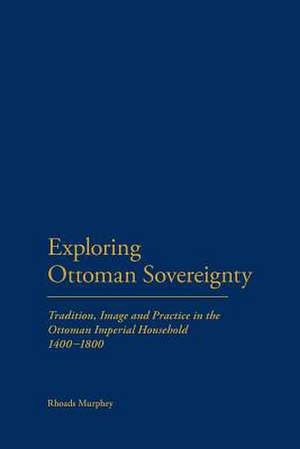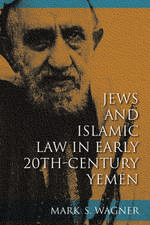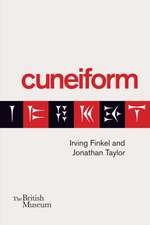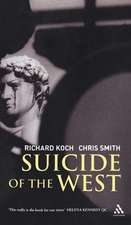Exploring Ottoman Sovereignty: Tradition, Image and Practice in the Ottoman Imperial Household, 1400-1800
Autor Dr Rhoads Murpheyen Limba Engleză Paperback – 19 oct 2011
| Toate formatele și edițiile | Preț | Express |
|---|---|---|
| Paperback (1) | 315.07 lei 6-8 săpt. | |
| Bloomsbury Publishing – 19 oct 2011 | 315.07 lei 6-8 săpt. | |
| Hardback (1) | 835.11 lei 6-8 săpt. | |
| Bloomsbury Publishing – 24 sep 2008 | 835.11 lei 6-8 săpt. |
Preț: 315.07 lei
Preț vechi: 342.24 lei
-8% Nou
Puncte Express: 473
Preț estimativ în valută:
60.31€ • 65.53$ • 50.69£
60.31€ • 65.53$ • 50.69£
Carte tipărită la comandă
Livrare economică 21 aprilie-05 mai
Preluare comenzi: 021 569.72.76
Specificații
ISBN-13: 9781441120083
ISBN-10: 1441120084
Pagini: 370
Ilustrații: black & white illustrations
Dimensiuni: 156 x 234 x 20 mm
Greutate: 0.52 kg
Editura: Bloomsbury Publishing
Colecția Continuum
Locul publicării:London, United Kingdom
ISBN-10: 1441120084
Pagini: 370
Ilustrații: black & white illustrations
Dimensiuni: 156 x 234 x 20 mm
Greutate: 0.52 kg
Editura: Bloomsbury Publishing
Colecția Continuum
Locul publicării:London, United Kingdom
Caracteristici
The author is an expert in the fields of Empire and Warfare.
Notă biografică
Rhoads Murphey is Reader in Ottoman Studies in the Department of History at the University of Birmingham, UK. He is the author of numerous books on Ottoman Empire and Warfare.
Cuprins
Maps, Dynastic, Genealogical and Chronological Charts Introduction 1. Dynastic Origins: Medieval Inheritances and Major Influences on Ottoman Concepts of Sovereignty 2. Dynastic Identity: Ottoman Political Values and the Quest for an Imperial Identity in the Proto-Imperial Era, 1300-1450 3. Dynastic Image: An Investigation of the Ottoman's Use of Titulature in Coins and Chancellery Documents 4. The Dynasty as Family Enterprise: Sibling Rivalry, Struggles for Succession to the Throne and Incipient Creation of the 'Political Household' 5. Consolidation of the Political Household in the Immediate Post Accession Phase of Rule 6. Formation of the Wider Palace Household: A People-centered Glimpse at the Institution of the Sultanate and an Account of the Composition, Growth and Development of the Imperial Administrative Corps, ca. 1470 to ca. 1670 7. Celebrating the Coming of Age of an Ottoman Prince: Exclusivity versus Inclusiveness in Ottoman Court Ceremonial
Recenzii
Mention -Book News, February 2009
'This book is a lively political anthropology of Ottoman sovereignty, an account of the rituals, ceremonies, and projection of the sultans' power over the period 1480-1820.'
'This book is a lively political anthropology of Ottoman sovereignty, an account of the rituals, ceremonies, and projection of the sultans' power over the period 1480-1820.'





















